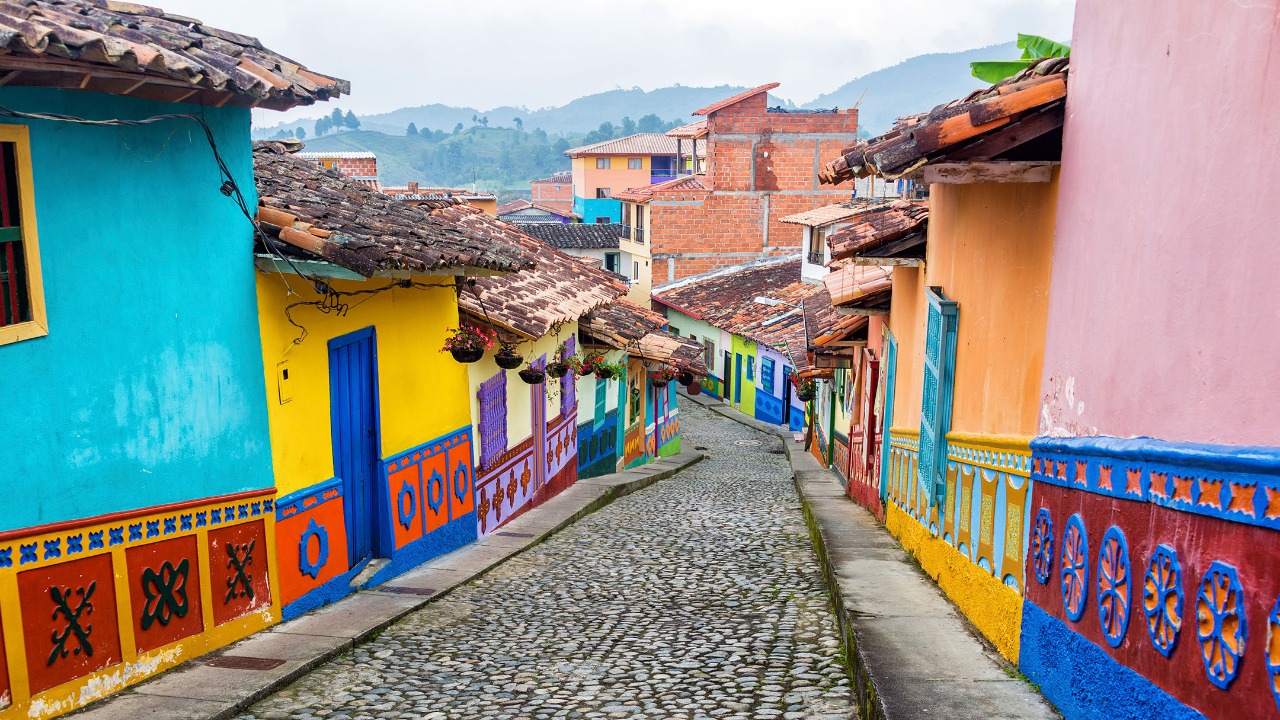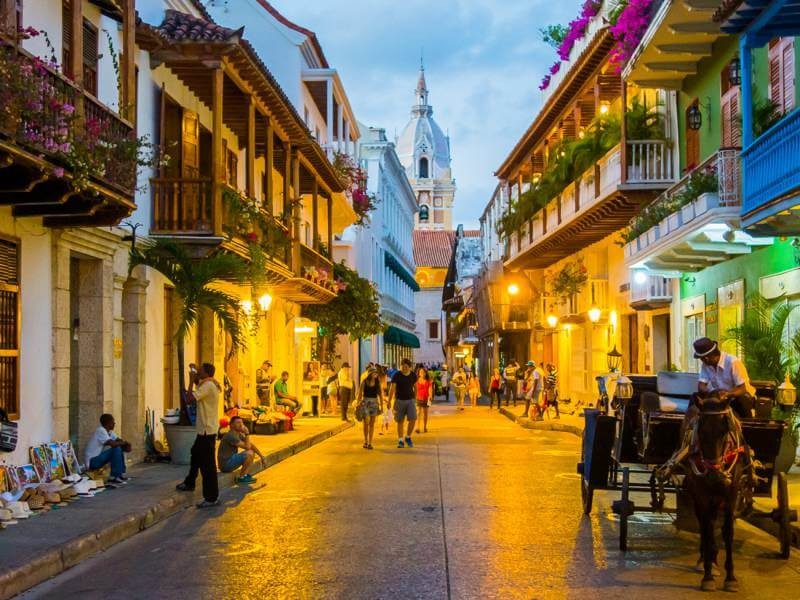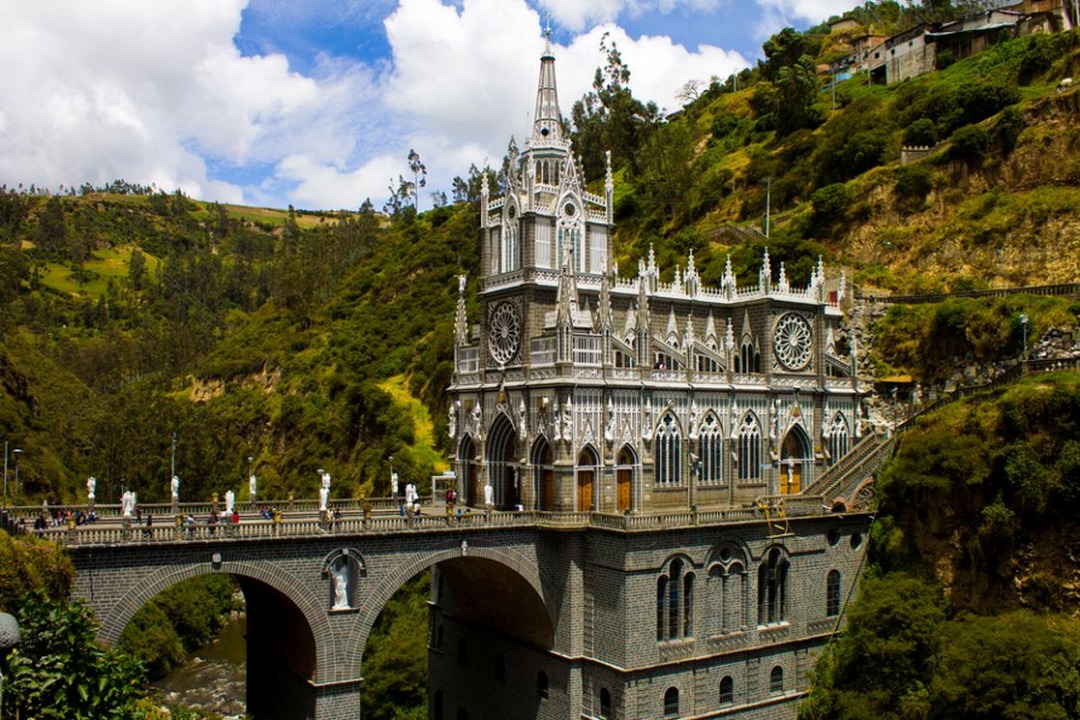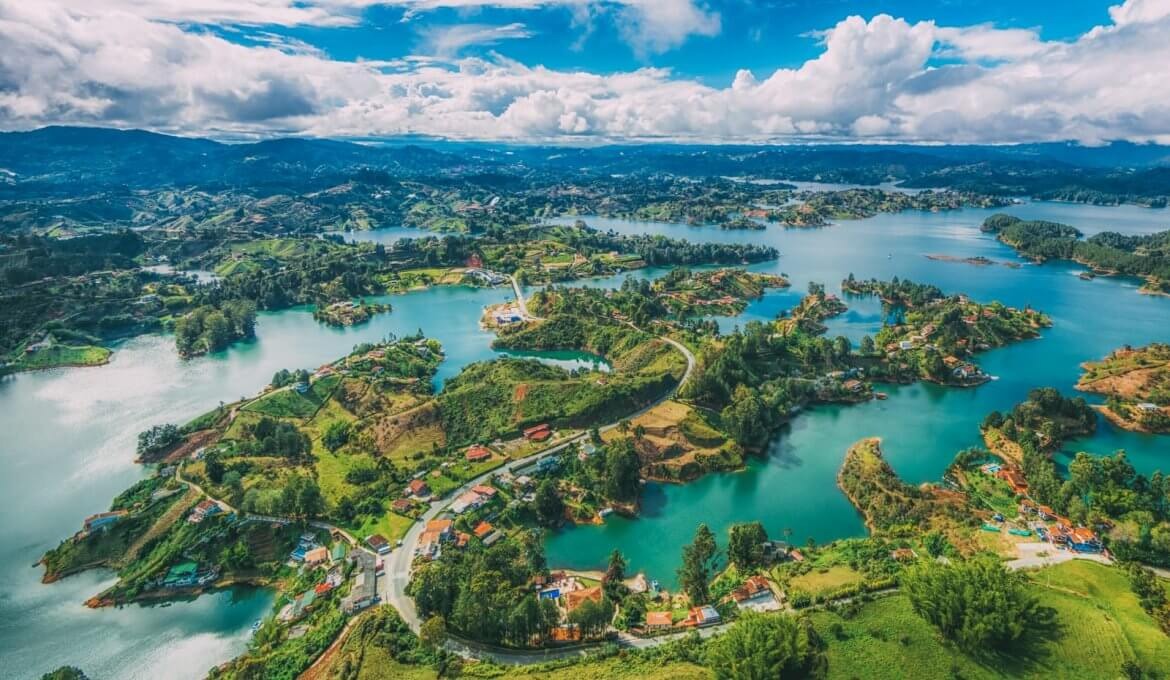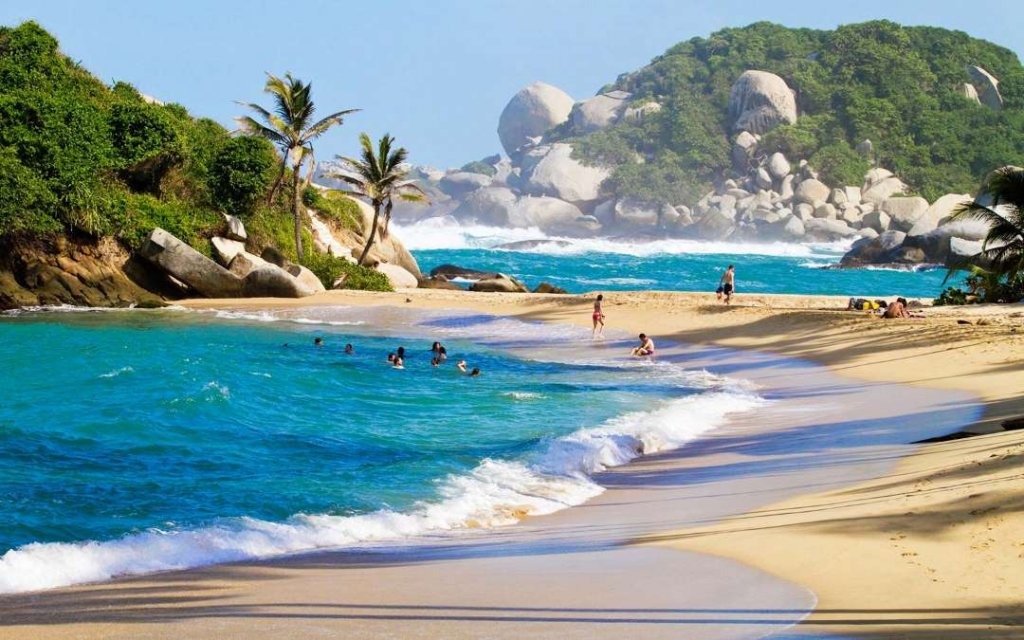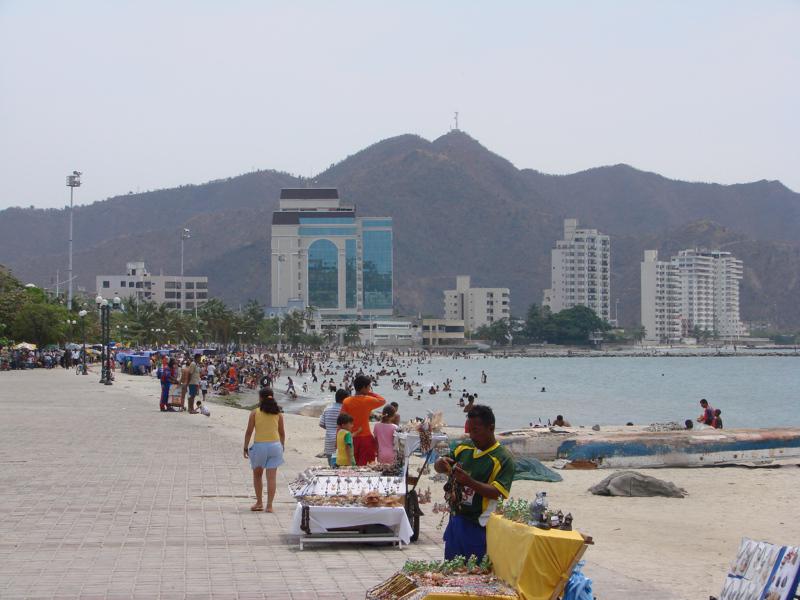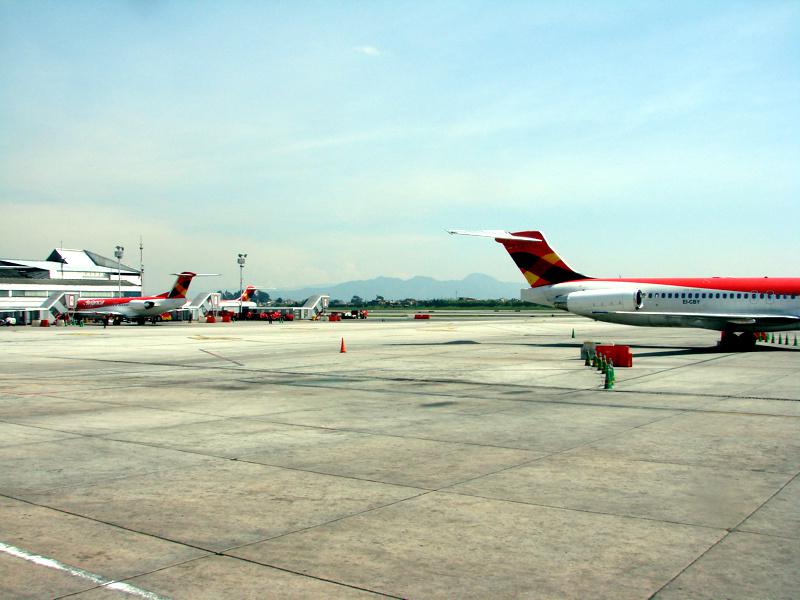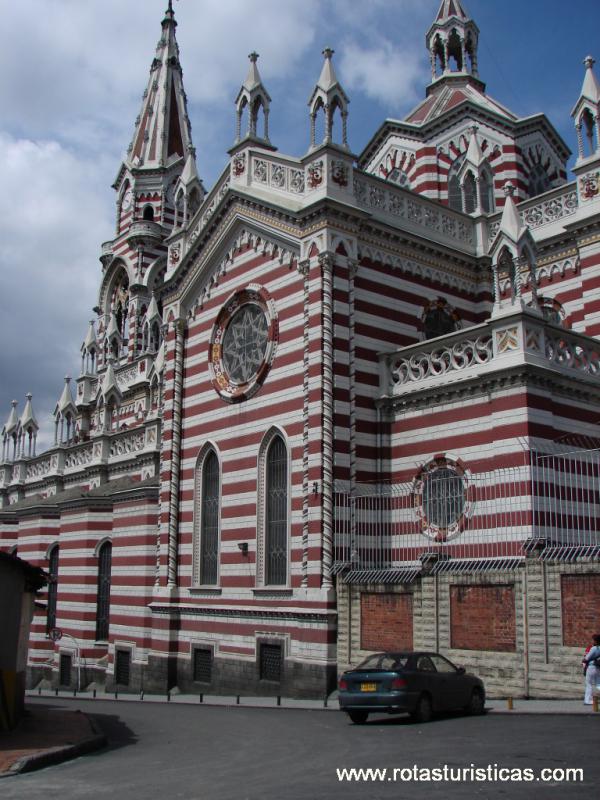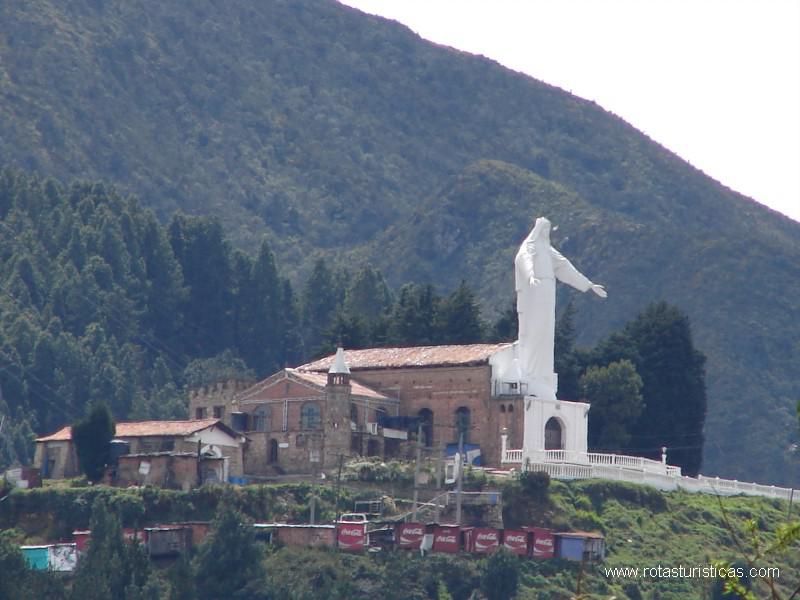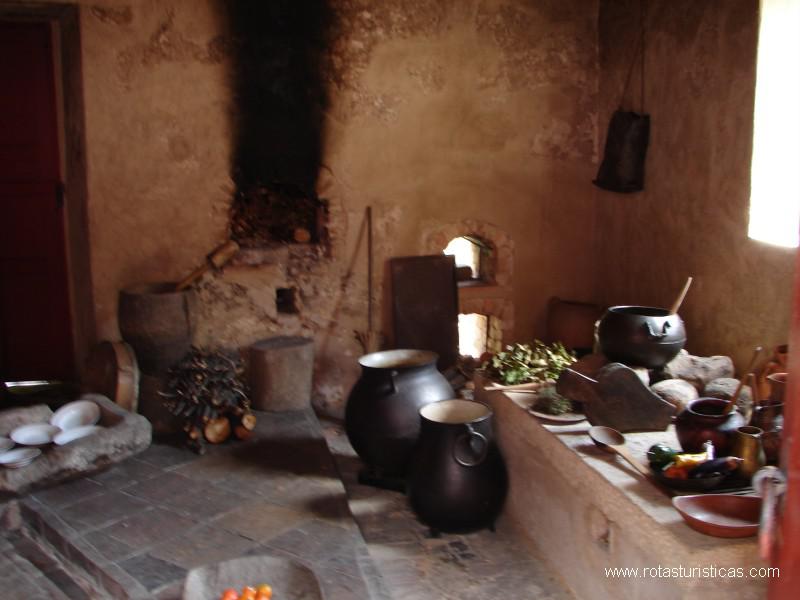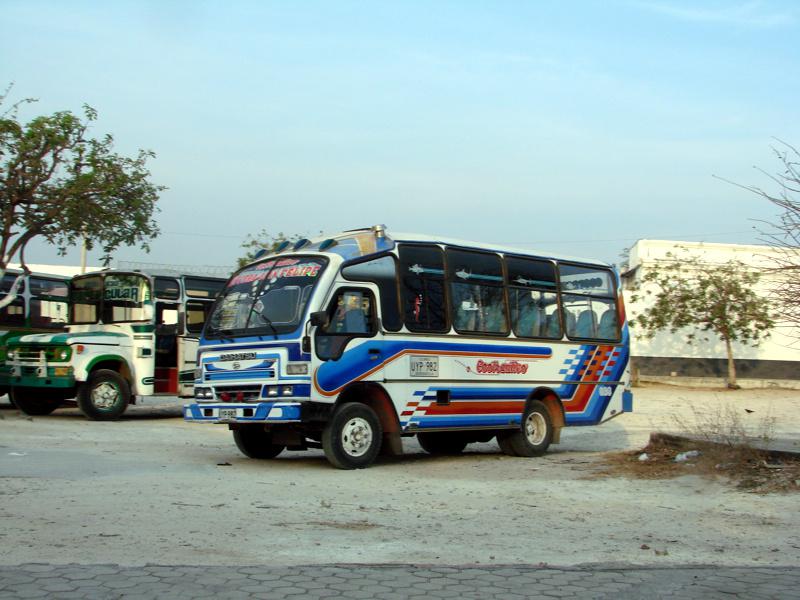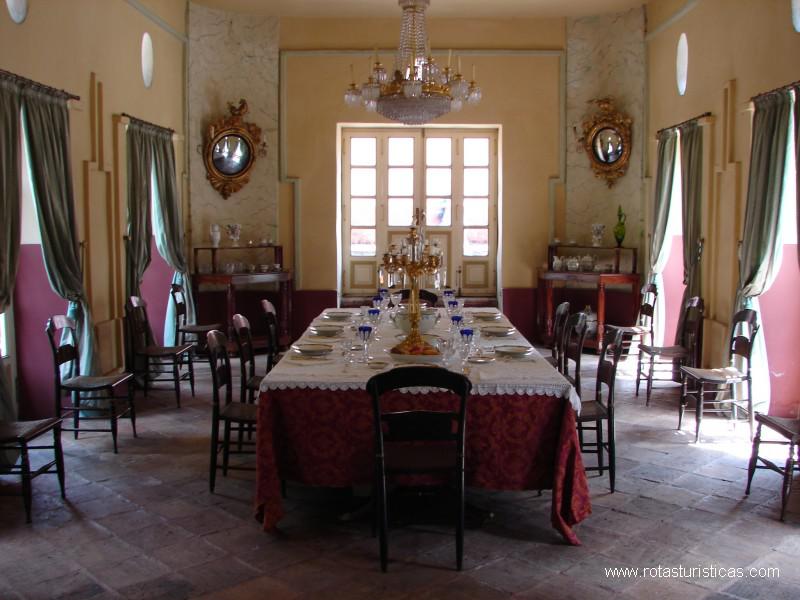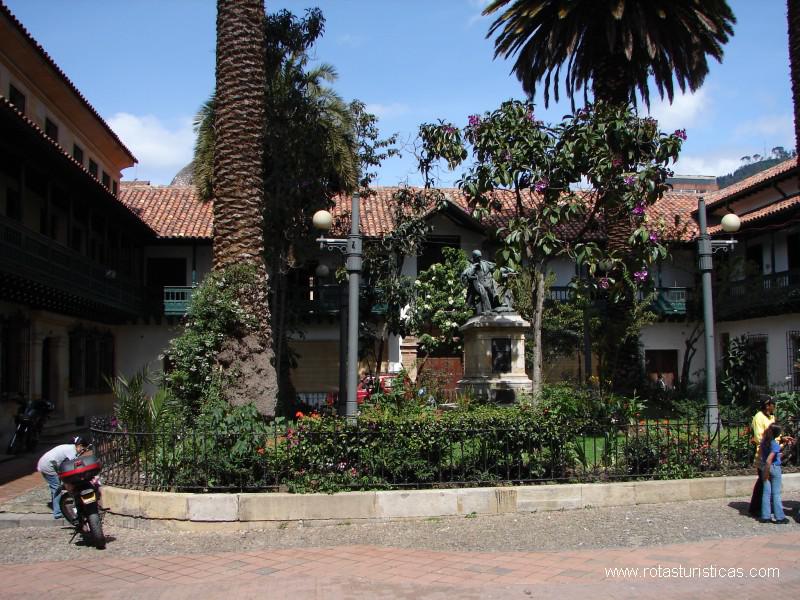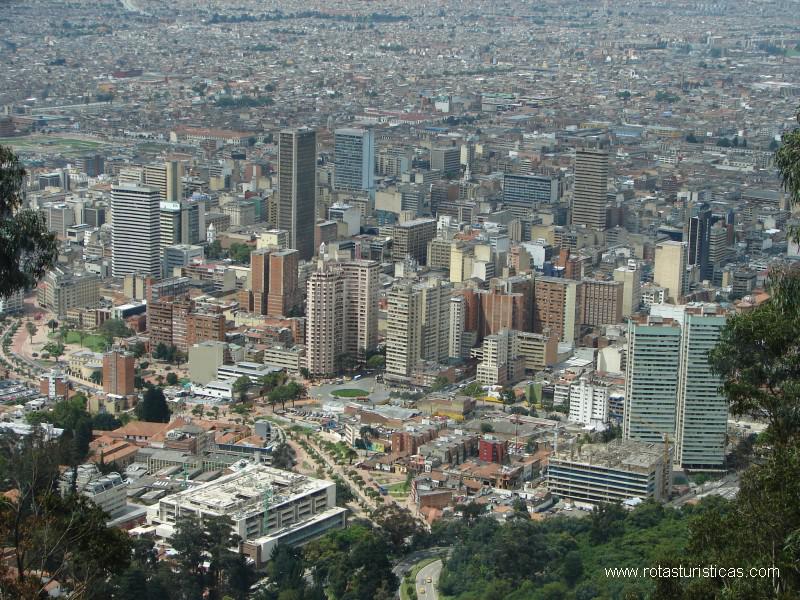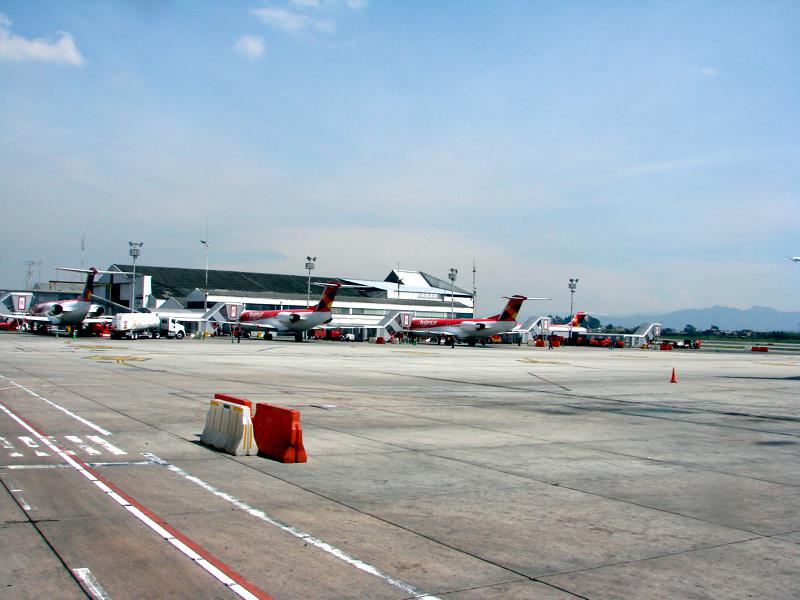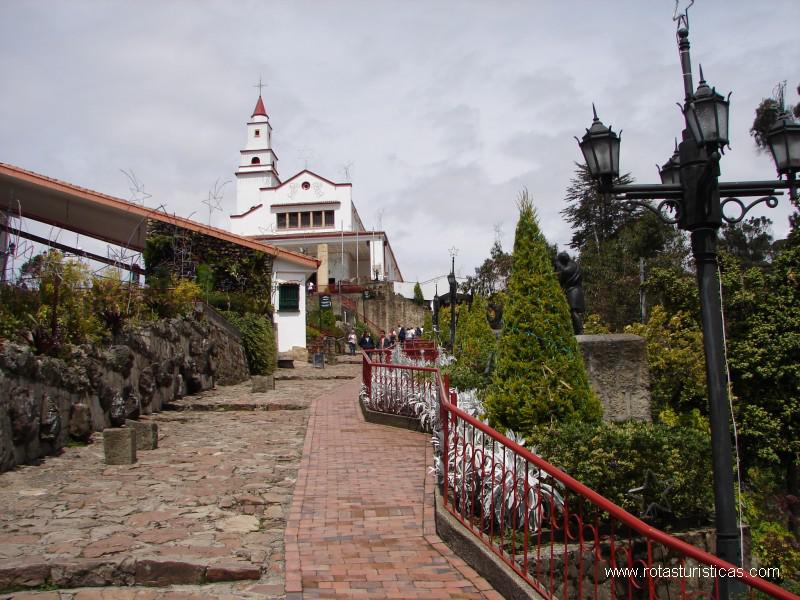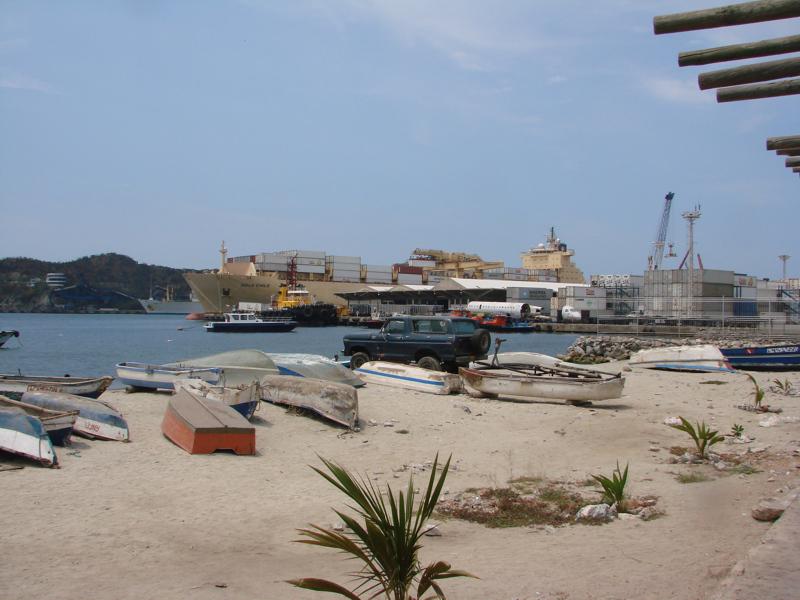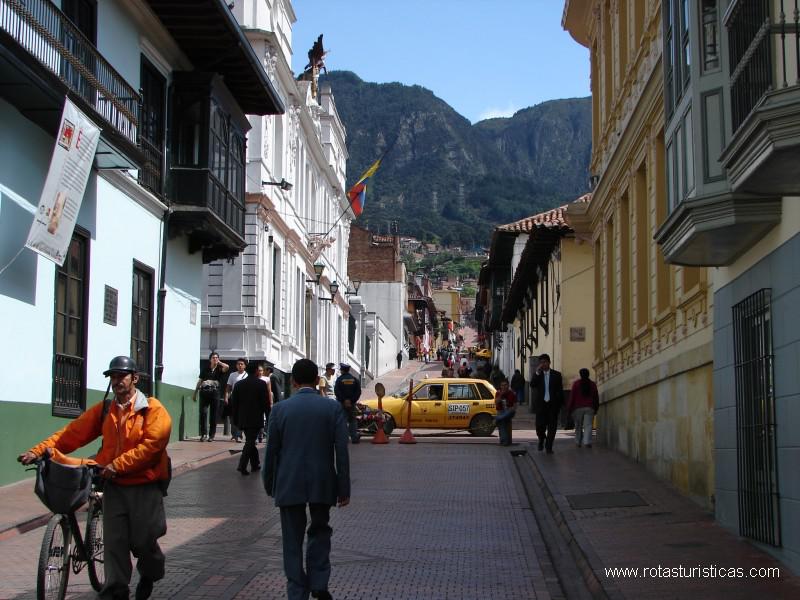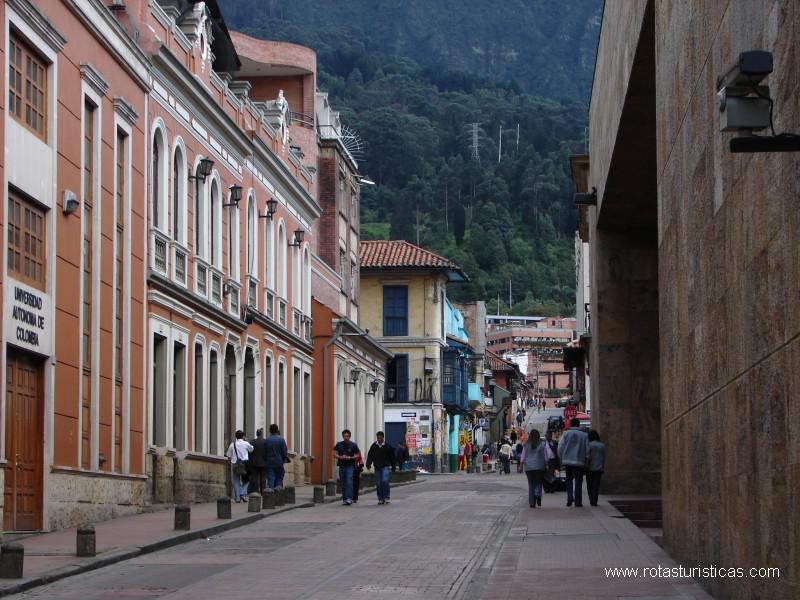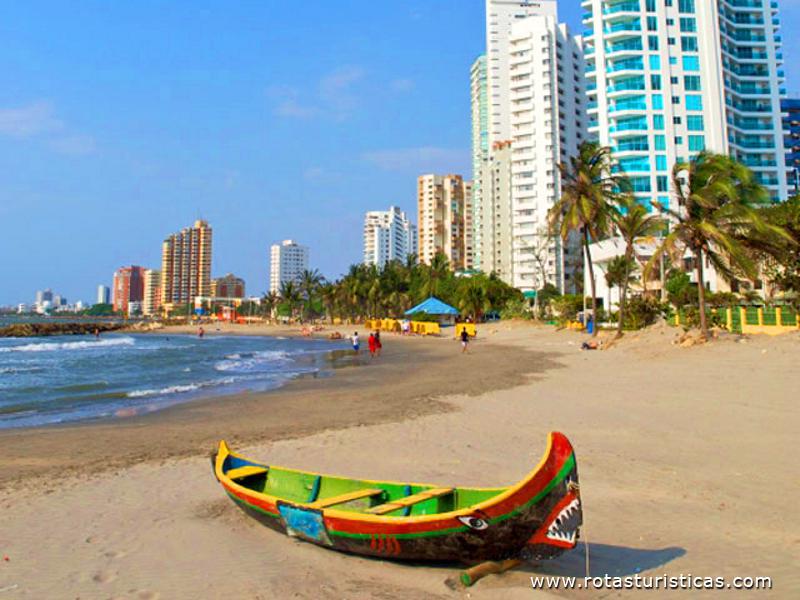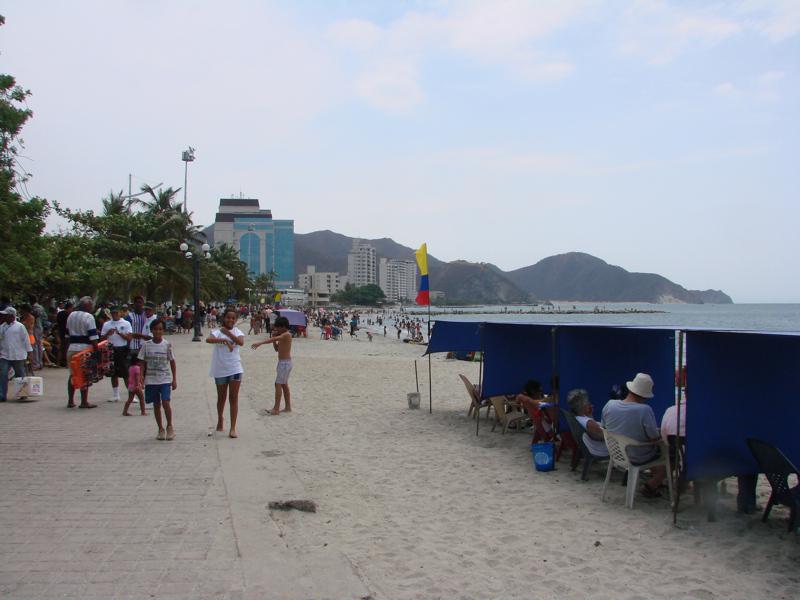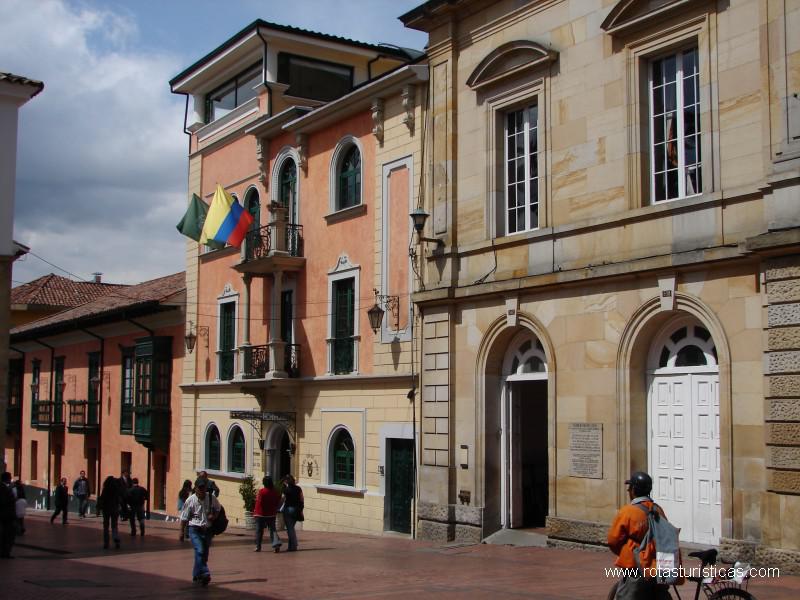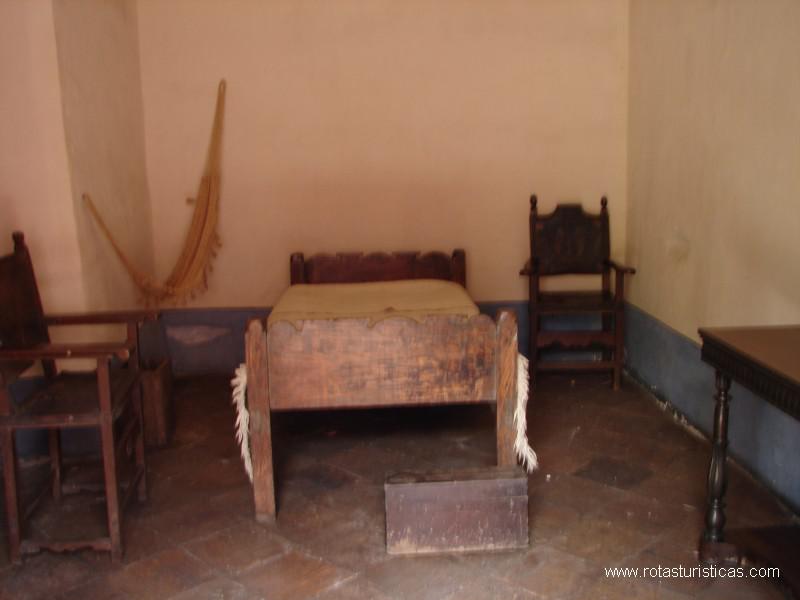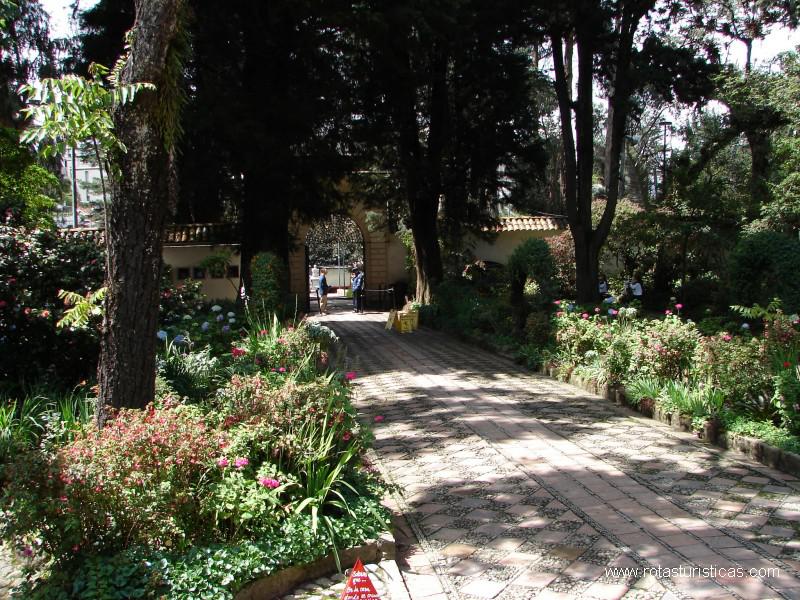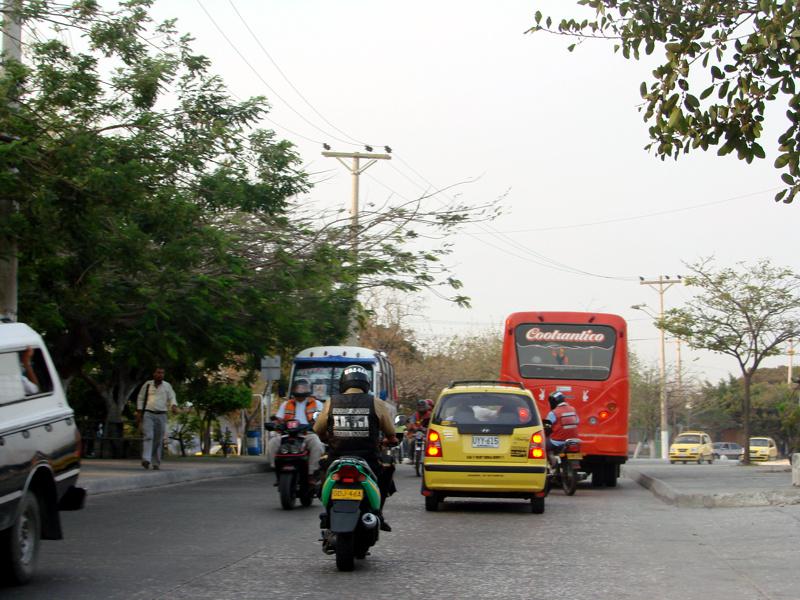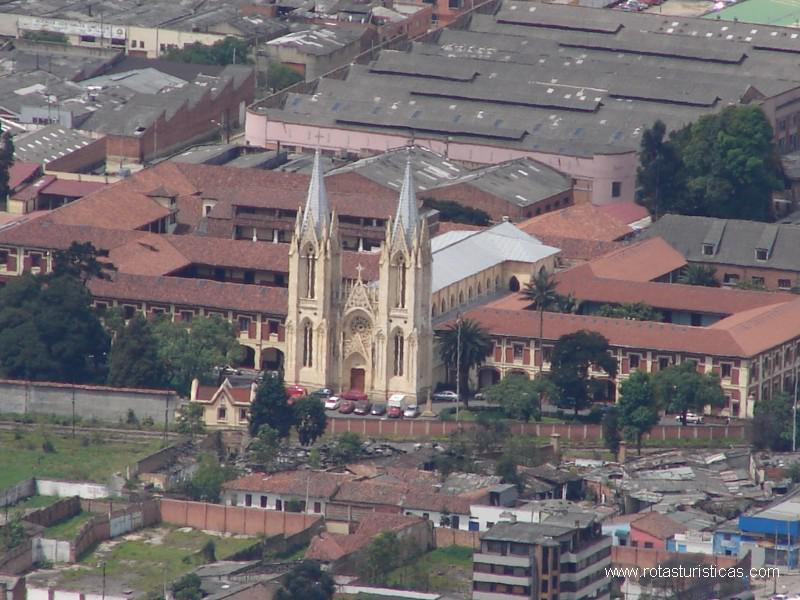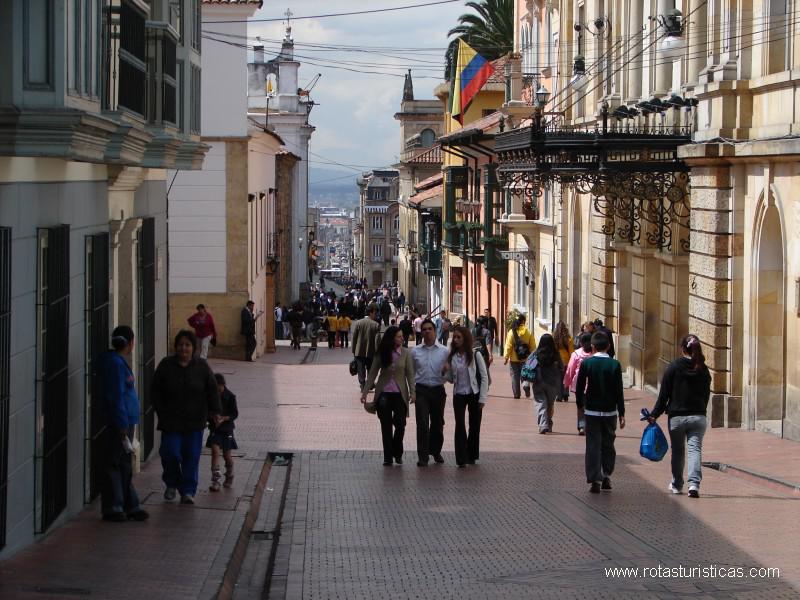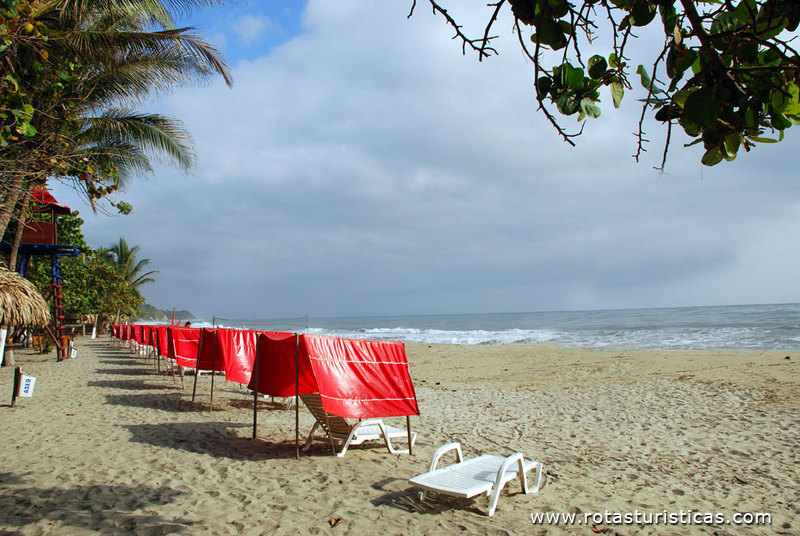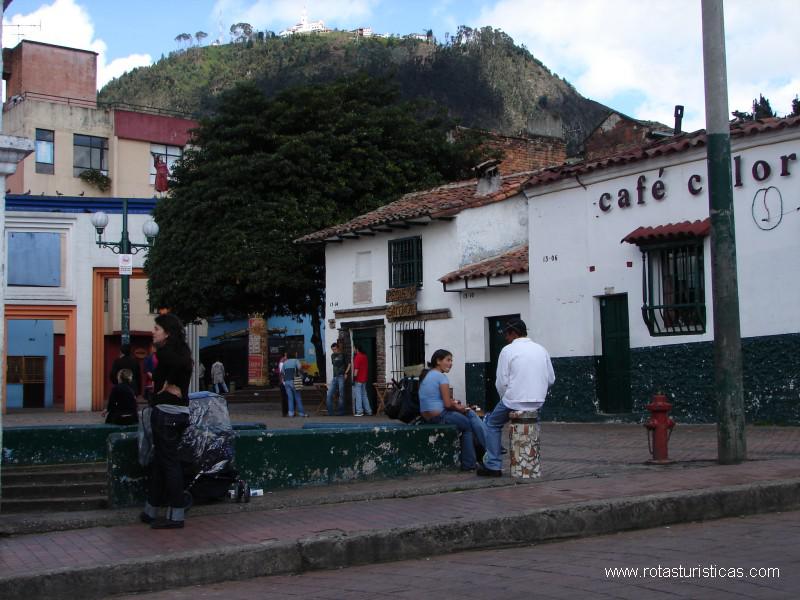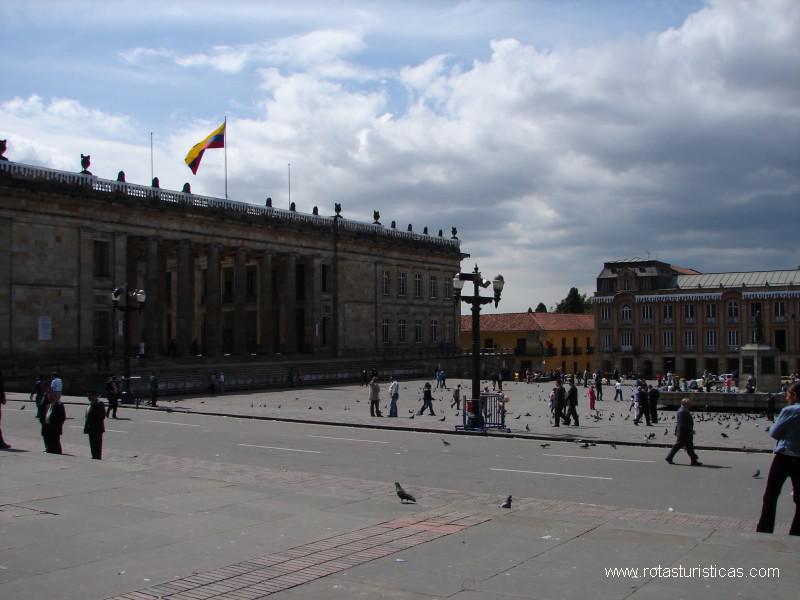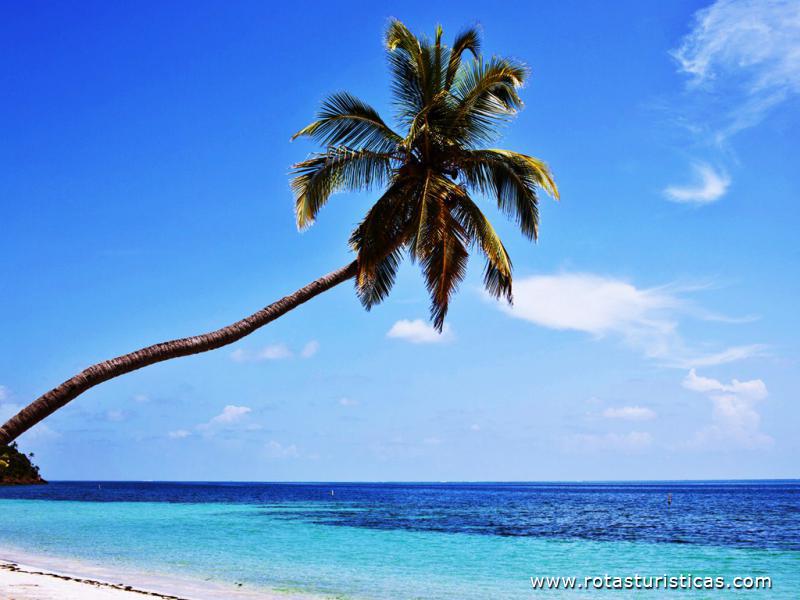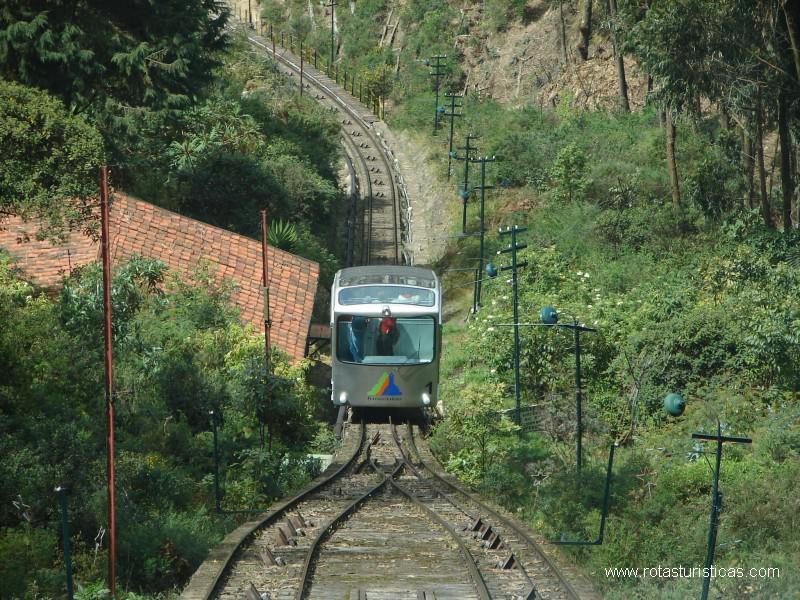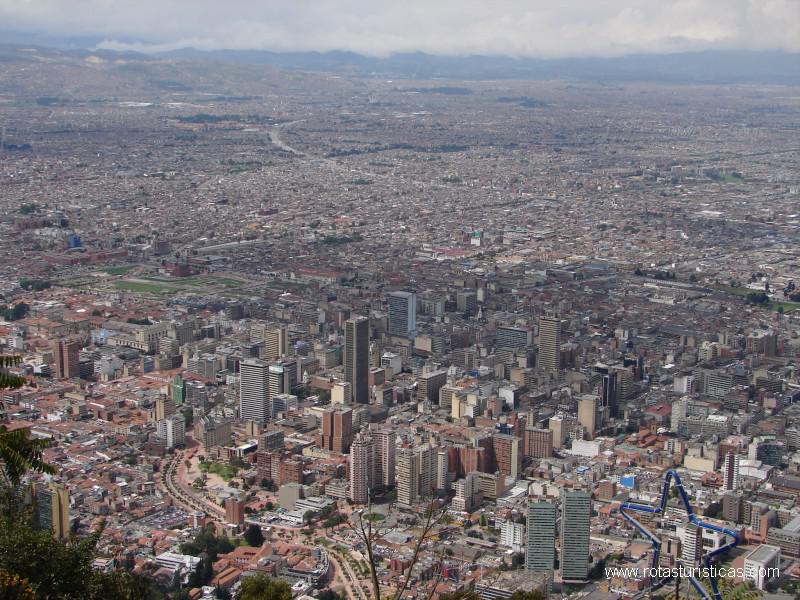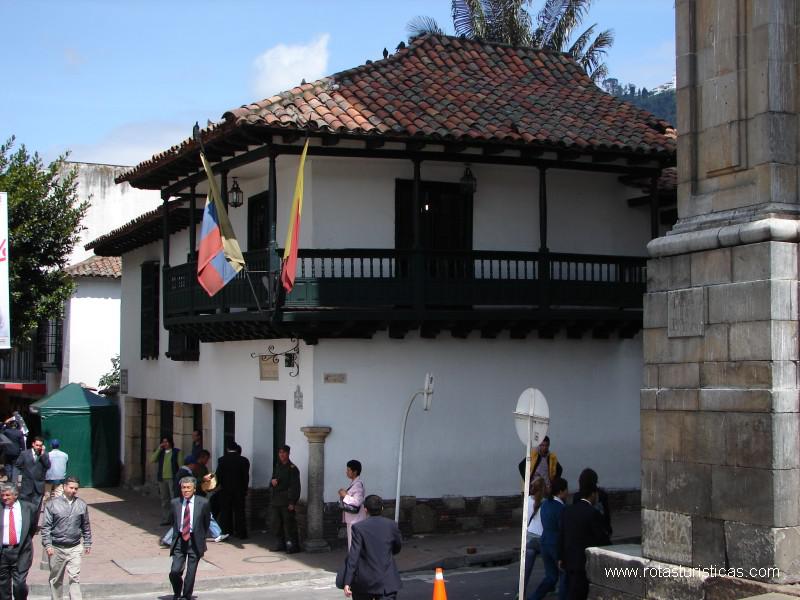Pictures of: Colombia
Location map
Airports
Hotels and other Accommodation
Golf Courses
What to visit
Where to Eat
Where to have fun
Consulates & Embassies
World Nomads
The Travel Insurance with the largest coverage

The Travel Insurance with the largest coverage

Colombia
Colombia, officially the Republic of Colombia, is a constitutional republic located in northwestern South America, bordered on the northwest by Panama, on the north by the Caribbean Sea, on the east by Venezuela and Brazil, on the south by Ecuador and Peru, and on the west by the Pacific Ocean.
The territory that is today Colombia was originally inhabited by indigenous peoples, including Muisca, Quimbaya, and Tairona.
In 1499 the Spaniards began a period of conquest and colonization with the creation of the Viceroyalty of New Granada, with its capital in Bogota.
The Independence of Spain was conquered in 1819, but in 1830 Gran Colombia collapsed with the separation of Venezuela and Ecuador.
What is now Colombia and Panama have emerged through the Republic of New Granada.
The new nation experienced federalism as the Granadine Confederation (1858), and then the United States of Colombia (1863), before the Republic of Colombia was finally declared in 1886. Panama separated in 1903.
Since the 1960s, the country has suffered from a low-intensity asymmetric armed conflict, having intensified in the 1990s, but since 2000, conflict has declined considerably.
The territory that is today Colombia was originally inhabited by indigenous peoples, including Muisca, Quimbaya, and Tairona.
In 1499 the Spaniards began a period of conquest and colonization with the creation of the Viceroyalty of New Granada, with its capital in Bogota.
The Independence of Spain was conquered in 1819, but in 1830 Gran Colombia collapsed with the separation of Venezuela and Ecuador.
What is now Colombia and Panama have emerged through the Republic of New Granada.
The new nation experienced federalism as the Granadine Confederation (1858), and then the United States of Colombia (1863), before the Republic of Colombia was finally declared in 1886. Panama separated in 1903.
Since the 1960s, the country has suffered from a low-intensity asymmetric armed conflict, having intensified in the 1990s, but since 2000, conflict has declined considerably.
Official language
Spanish
Currency
Colombian peso
Tourism
Colombia is a country to explore, rest, become acquainted with its history, culture and traditions and learn a multitude of things.
Its incredible natural biodiversity, which is represented in 53 protected areas and numerous places of great beauty, is perhaps the main attraction that Colombia presents to the world.
The complex geographical relief of the various regional identities marks the faces of Colombia.
Colombia is a country with a great tourist offer: the fun and beaches of Cartagena, Areia Andrés and Santa Marta, the history, culture and modernity of Bogotá, Medellín and Cali, the nature and adventure of Santander, Boyacá and the Triangle of the Coffee, make this a great destination for every type of tourist.
Every place inside the country has its own history to discover, sights to see and activities to experience.
In Colombia, foreign visitors can experience the best coffee in the world, the beauty of the crafts and emeralds, the grandeur of their landscapes and the surprise of discovering a country farther than they imagined, and certainly want to return.
Its incredible natural biodiversity, which is represented in 53 protected areas and numerous places of great beauty, is perhaps the main attraction that Colombia presents to the world.
The complex geographical relief of the various regional identities marks the faces of Colombia.
Colombia is a country with a great tourist offer: the fun and beaches of Cartagena, Areia Andrés and Santa Marta, the history, culture and modernity of Bogotá, Medellín and Cali, the nature and adventure of Santander, Boyacá and the Triangle of the Coffee, make this a great destination for every type of tourist.
Every place inside the country has its own history to discover, sights to see and activities to experience.
In Colombia, foreign visitors can experience the best coffee in the world, the beauty of the crafts and emeralds, the grandeur of their landscapes and the surprise of discovering a country farther than they imagined, and certainly want to return.
Gastronomy
Colombian cuisine includes the culinary traditions and practices of coast of Colombia, Pacific coast, mountains, jungle, and ranches, varying regionally due to Spanish, African, Arab influences and some Asian natives.
There is a wide variety of dishes that take into account the difference of regional climates such as:
In the city of Medellín, the typical dish is the pan paisa, made with beans, rice, ground beef or roast beef, chorizo, fried egg, arepa, and chicharrón. It is usually accompanied with avocado, tomato and special sauces.
In the city of Cali, the most traditional dish is chicken ancestor, a soup made up mainly of chicken, banana, corn, coriander, cassava root, and other condiments.
In Bogota and the Andean region, ajiaco is the traditional dish, also a type of soup made from chicken meat, potatoes and a locally grown herb called guasca.
Traditionally, cream milk and capers are added before eating.
Both soups are served with white rice, salads with a hint of lemon, avocado, banana or French fries, sweet or savory.
At breakfast, people usually eat changua, chives, and egg soup.
On the Caribbean coast, spicy cuisine, with fish and lobster, is widely practiced and appreciated. Coconut rice is a common dish along coastal towns.
In the Llanos, the meat of the barbecue, like the Ternera llanera is common, and also typical fish of rivers like the yellow one.
In the Amazon, the cuisine is influenced by Brazilian and Peruvian traditions.
Inside, the dishes reflect the blend of cultures, inherited mainly from indigenous and European cuisine, and produce from the land, mainly from agriculture, livestock, river fishing, and other livestock breeding. Such is the case of the sancocho soup in Valledupar, arepas (corn bread). Local species of animals such as guaratinaja are part of the Amerindian Wayuu culture.
In the region of Tolima, the tamales tamales are a delicacy. These tamales are made from a loaf of corn bread and feature peas, carrots, potatoes, rice, chicken, pork, and various spices, being wrapped in banana leaves and cooked for three to four hours.
In the islands of San Andrés, Providencia and Santa Catalina, the main dish is rondon, a seafood dish made of coconut milk, fish, shell, cassava root (cassava), sweet potatoes, white yams, and pepper- herbs They also have a crab soup, which is considered a delicacy, made with the same ingredients as Rondon, but without the fish.
Spicy Aji, is a spicy, coriander-based sauce, is used as a condiment for many dishes, including empanadas, platters, and soups. This sauce is traditional from the city of Antioquia.
There is a wide variety of dishes that take into account the difference of regional climates such as:
In the city of Medellín, the typical dish is the pan paisa, made with beans, rice, ground beef or roast beef, chorizo, fried egg, arepa, and chicharrón. It is usually accompanied with avocado, tomato and special sauces.
In the city of Cali, the most traditional dish is chicken ancestor, a soup made up mainly of chicken, banana, corn, coriander, cassava root, and other condiments.
In Bogota and the Andean region, ajiaco is the traditional dish, also a type of soup made from chicken meat, potatoes and a locally grown herb called guasca.
Traditionally, cream milk and capers are added before eating.
Both soups are served with white rice, salads with a hint of lemon, avocado, banana or French fries, sweet or savory.
At breakfast, people usually eat changua, chives, and egg soup.
On the Caribbean coast, spicy cuisine, with fish and lobster, is widely practiced and appreciated. Coconut rice is a common dish along coastal towns.
In the Llanos, the meat of the barbecue, like the Ternera llanera is common, and also typical fish of rivers like the yellow one.
In the Amazon, the cuisine is influenced by Brazilian and Peruvian traditions.
Inside, the dishes reflect the blend of cultures, inherited mainly from indigenous and European cuisine, and produce from the land, mainly from agriculture, livestock, river fishing, and other livestock breeding. Such is the case of the sancocho soup in Valledupar, arepas (corn bread). Local species of animals such as guaratinaja are part of the Amerindian Wayuu culture.
In the region of Tolima, the tamales tamales are a delicacy. These tamales are made from a loaf of corn bread and feature peas, carrots, potatoes, rice, chicken, pork, and various spices, being wrapped in banana leaves and cooked for three to four hours.
In the islands of San Andrés, Providencia and Santa Catalina, the main dish is rondon, a seafood dish made of coconut milk, fish, shell, cassava root (cassava), sweet potatoes, white yams, and pepper- herbs They also have a crab soup, which is considered a delicacy, made with the same ingredients as Rondon, but without the fish.
Spicy Aji, is a spicy, coriander-based sauce, is used as a condiment for many dishes, including empanadas, platters, and soups. This sauce is traditional from the city of Antioquia.
Weather
The proximity of Colombia to Ecuador means that its temperature varies little throughout the year. The temperature changes with altitude, creating several climatic zones from hot plains to the frozen Andean peaks.
As a rule, the temperature drops to about 6 ° C with each 1000m rise in altitude. If the average temperature at sea level is 30 ° C, it will be around 24 ° C to 1000, etc.
Altitude also affects the difference between daytime and nighttime temperatures. The higher the height, the greater the difference. Consequently, in the highlands there may be hot days but very cold nights, while in the plains days and nights are almost equally hot.
Colombia has two seasons: dry or summer and wet or winter.
The pattern of the seasons varies in different parts of the country, and has been greatly affected in recent years by El Niño and La Niña.
As an approximate guideline, only in the Andean region there are two droughts and two rainy seasons per year. The main dry season falls between December and March, with a shorter and less dry period between July and August. This pattern usually has wide variations throughout the Andean zone.
The weather in Los Llanos has a more defined pattern: there is a dry season between December and March, while the rest of the year is humid. The Amazon does not have a uniform climate, but in general, it is quite humid all year round.
As a rule, the temperature drops to about 6 ° C with each 1000m rise in altitude. If the average temperature at sea level is 30 ° C, it will be around 24 ° C to 1000, etc.
Altitude also affects the difference between daytime and nighttime temperatures. The higher the height, the greater the difference. Consequently, in the highlands there may be hot days but very cold nights, while in the plains days and nights are almost equally hot.
Colombia has two seasons: dry or summer and wet or winter.
The pattern of the seasons varies in different parts of the country, and has been greatly affected in recent years by El Niño and La Niña.
As an approximate guideline, only in the Andean region there are two droughts and two rainy seasons per year. The main dry season falls between December and March, with a shorter and less dry period between July and August. This pattern usually has wide variations throughout the Andean zone.
The weather in Los Llanos has a more defined pattern: there is a dry season between December and March, while the rest of the year is humid. The Amazon does not have a uniform climate, but in general, it is quite humid all year round.
Documentation
Passports:
A valid passport is required for all foreigners to enter Colombia. Your passport must be valid for at least 90 days after entry into the country, but it is recommended that it be valid for at least six months. The passport must have at least two free pages.
Visas and authorizations:
Passengers from countries with restrictions must apply for a tourist visa at the Colombian consulate of their country of origin before traveling to Colombia, except for citizens of the following countries (provided they are strictly for tourism purposes and for one maximum of 90 days): Argentina, Australia, Barbados, Belgium, Brazil, Canada, Costa Rica, Chile, Denmark, Ecuador, El Salvador, Germany, Finland, France, Great Britain, Greece, Guatemala, Italy, Japan, Liechtenstein, Luxembourg, Mexico, Netherlands, Norway, Peru, Poland, Republic of Korea, Spain, Sweden, Switzerland, Trinidad and Tobago, United States, Uruguay and Venezuela.
Other documents or papers that are worth having during your travels are:
International driving license
Certificates of vaccination
Travel or medical insurance
Recent photos passport size
Photocopies of passports, credit cards, insurance, etc.
A valid passport is required for all foreigners to enter Colombia. Your passport must be valid for at least 90 days after entry into the country, but it is recommended that it be valid for at least six months. The passport must have at least two free pages.
Visas and authorizations:
Passengers from countries with restrictions must apply for a tourist visa at the Colombian consulate of their country of origin before traveling to Colombia, except for citizens of the following countries (provided they are strictly for tourism purposes and for one maximum of 90 days): Argentina, Australia, Barbados, Belgium, Brazil, Canada, Costa Rica, Chile, Denmark, Ecuador, El Salvador, Germany, Finland, France, Great Britain, Greece, Guatemala, Italy, Japan, Liechtenstein, Luxembourg, Mexico, Netherlands, Norway, Peru, Poland, Republic of Korea, Spain, Sweden, Switzerland, Trinidad and Tobago, United States, Uruguay and Venezuela.
Other documents or papers that are worth having during your travels are:
International driving license
Certificates of vaccination
Travel or medical insurance
Recent photos passport size
Photocopies of passports, credit cards, insurance, etc.
Health care
Hospitals and other public health facilities in Colombia do not have a high level of efficiency, while private hospitals are of good quality, so it is advised to those who visit Colombia to take out health insurance and travel insurance, which covers all medical expenses.
Vaccines
No vaccine is required. But if the purpose of the trip is also to go to the Amazon, it is recommended a vaccine against yellow fever.
Vaccines
No vaccine is required. But if the purpose of the trip is also to go to the Amazon, it is recommended a vaccine against yellow fever.
Security
The safety conditions are precarious.
Due to the serious conditions of insecurity, any trip to the following areas is not advisable:
- Center-South of Bogotá;
- Catatumbo and Putumayo;
- Llanos Orientales, especially the Departments of Guaviare, Meta, Caquetá, Arauca, Vichada and Vaupés;
- Antioquia (Medellín);
- Region of Magdalena Medio, comprising the rural areas of the Departments of Norte de Santander, Cesar, Boyacá, Caldas, Cundinamarca and Tolima;
- Departments of Valle del Cauca (in particular Cali), Cauca, Chocó and Nariño (especially the Pacific coast and border areas with Ecuador);
- Border with Panama and Gulf of Urabá;
- Sierra Nevada of Santa Marta.
What is more, it is strongly recommended not to use rural roads, especially at night (it is not advisable to travel by land anyway). Also avoid the mountainous areas of the country (with the exception of the big cities nearby or in the highlands between the Andean chains), because it is in them that are many of the illegal armed groups.
The security situation in Colombia is generally difficult, given that the common delinquency is compounded by the activities of drug trafficking and illegal armed groups, which results in an undeniable climate of violence and insecurity, although in recent years these have come to decrease.
Thus, in any move to Colombia, and more than in most other countries, it is recommended to follow all the security procedures that common sense indicates and to maintain an attitude of vigilance and caution.
Notwithstanding the foregoing, there are some areas of the country where the risks are minor (north of Bogota, Cartagena, San Andrés archipelago), as well as, generally, the capitals of the various departments of Colombia and the tourist centers are safer than rural areas, which should be avoided.
It warns about the dangers of drugs. Drug possession and trafficking are severely punished by law in Colombia. Each interested party should make their own bags and not carry any order from another person, nor ever lose sight of their luggage. The use of drugs (eg "Burudanga") in drinks, sprays, cigarettes or, even by inhaling their smoke, causes the loss of will, for which they are used in robberies, abductions and burglaries to households. The main victims are unaccompanied travelers. This type of aggression is more common in public places and public transport. Therefore, it is necessary to avoid any offer on the part of strangers, and it should be kept away when they are approached by them with requests for information. Under no circumstances should you accept the help of strangers to carry your luggage. The penalties for possession of drugs are hard.
It is common to steal documents for fakes, so it is preferable that the originals are in safes in hotels or banks. In case of assault one should not offer resistance. It is necessary to have attention and to be vigilant if approached by supposed police who want to verify its documents, because there are confirmed cases of "false police" that use this method to try to rob tourists. Unless physically threatened, avoid giving him documents or money and ask him to escort you to the nearest police station or hotel.
Taxis should always be called by telephone, and avoid taking them on the street. Cars should be parked in the parks that are intended for them, so if parked on the street, they can be considered as potential trapped cars.
In Bogotá, the north of the city is safer with regard to violent crime, but it is not immune to robberies and cars.
Outside Bogotá, Cartagena, the archipelago of San Andres and the city of Leticia (Amazonas) are considered medium risk.
Due to the serious conditions of insecurity, any trip to the following areas is not advisable:
- Center-South of Bogotá;
- Catatumbo and Putumayo;
- Llanos Orientales, especially the Departments of Guaviare, Meta, Caquetá, Arauca, Vichada and Vaupés;
- Antioquia (Medellín);
- Region of Magdalena Medio, comprising the rural areas of the Departments of Norte de Santander, Cesar, Boyacá, Caldas, Cundinamarca and Tolima;
- Departments of Valle del Cauca (in particular Cali), Cauca, Chocó and Nariño (especially the Pacific coast and border areas with Ecuador);
- Border with Panama and Gulf of Urabá;
- Sierra Nevada of Santa Marta.
What is more, it is strongly recommended not to use rural roads, especially at night (it is not advisable to travel by land anyway). Also avoid the mountainous areas of the country (with the exception of the big cities nearby or in the highlands between the Andean chains), because it is in them that are many of the illegal armed groups.
The security situation in Colombia is generally difficult, given that the common delinquency is compounded by the activities of drug trafficking and illegal armed groups, which results in an undeniable climate of violence and insecurity, although in recent years these have come to decrease.
Thus, in any move to Colombia, and more than in most other countries, it is recommended to follow all the security procedures that common sense indicates and to maintain an attitude of vigilance and caution.
Notwithstanding the foregoing, there are some areas of the country where the risks are minor (north of Bogota, Cartagena, San Andrés archipelago), as well as, generally, the capitals of the various departments of Colombia and the tourist centers are safer than rural areas, which should be avoided.
It warns about the dangers of drugs. Drug possession and trafficking are severely punished by law in Colombia. Each interested party should make their own bags and not carry any order from another person, nor ever lose sight of their luggage. The use of drugs (eg "Burudanga") in drinks, sprays, cigarettes or, even by inhaling their smoke, causes the loss of will, for which they are used in robberies, abductions and burglaries to households. The main victims are unaccompanied travelers. This type of aggression is more common in public places and public transport. Therefore, it is necessary to avoid any offer on the part of strangers, and it should be kept away when they are approached by them with requests for information. Under no circumstances should you accept the help of strangers to carry your luggage. The penalties for possession of drugs are hard.
It is common to steal documents for fakes, so it is preferable that the originals are in safes in hotels or banks. In case of assault one should not offer resistance. It is necessary to have attention and to be vigilant if approached by supposed police who want to verify its documents, because there are confirmed cases of "false police" that use this method to try to rob tourists. Unless physically threatened, avoid giving him documents or money and ask him to escort you to the nearest police station or hotel.
Taxis should always be called by telephone, and avoid taking them on the street. Cars should be parked in the parks that are intended for them, so if parked on the street, they can be considered as potential trapped cars.
In Bogotá, the north of the city is safer with regard to violent crime, but it is not immune to robberies and cars.
Outside Bogotá, Cartagena, the archipelago of San Andres and the city of Leticia (Amazonas) are considered medium risk.
Telecommunications and electricity
Mobile Phones / Cell Phones
The technologies used in the Colombian mobile network are those of GSM, GPRS, EDGE, UMTS, HSDPA, HSPA +.
Internet
Many hotels have free internet connections or for a fee. There are numerous internet points in every city in the country.
Electricity
The electric current in Colombia is 110 Volts, 60 Hz.
Power Outlets
The electrical outlets, which are used in Colombia, are those of type A and B. Both types of bases are the same as those used in the United States of America.
The technologies used in the Colombian mobile network are those of GSM, GPRS, EDGE, UMTS, HSDPA, HSPA +.
Internet
Many hotels have free internet connections or for a fee. There are numerous internet points in every city in the country.
Electricity
The electric current in Colombia is 110 Volts, 60 Hz.
Power Outlets
The electrical outlets, which are used in Colombia, are those of type A and B. Both types of bases are the same as those used in the United States of America.
Other tourist destinations in:
Colombia
Colombia
Other world tourist destinations
Why to book with FIND HOTEL ONLINE
The best prices
Our partnerships with the world´s largest operators offer research on the best market prices.
More options
At Rotas Turisticos you can book the hotel, buy the air ticket, book the transfer from the airport to the hotel and vice versa, book the local excursions, rent the car, take travel insurance and consult the places to visit and where to go.
Holiday Tips & Destinations
Hundreds of holiday destinations with all the options that allow you to easily choose the destination that best suits your dream vacation.
FIND HOTEL ONLINE
Links

